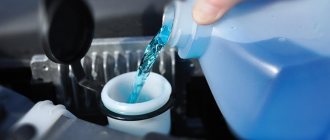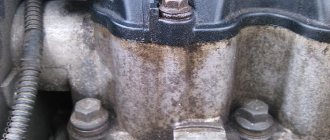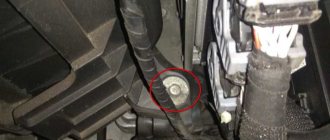Drivers and craftsmen know many different folk ways of improving the efficient operation of engines or cleaning them. You can often hear recommendations about adding acetone to gasoline, the consequence of which should be to clean the combustion chambers of carbon deposits formed during engine operation. It is worth recognizing that it is necessary to clean the cylinders of deposits, but does acetone really help? Moreover, many drivers claim that the consequence of adding acetone to gasoline will be an increase in environmental performance and a reduction in fuel consumption to rated values.
Stores sell special fuel additives from well-known manufacturers, which are designed to reduce gasoline consumption and clean the insides of the engine. But according to reviews, acetone in gasoline is also an effective remedy. Let's try to figure out whether it can replace additives, and is there any point in pouring technical acetone into the tank? Will such a mixture harm a modern car engine?
Is there any reason?
Recently, the issue of adding acetone to gasoline has been relevant; the results and consequences of this experiment are quite difficult to guess, since they will depend on various parameters: fuel quality, driving style, car engine. Most technical consultants and specialists in the repair, maintenance and operation of vehicles are against adding any additives to the fuel tank. The exception is those drugs that are listed by the manufacturer itself, but acetone is never included in this list. Therefore, if you follow strict instructions, you cannot mix acetone in a tank of gasoline.
How to wash dirty injectors with acetone through a tank: question technique
Despite the wide range of branded additives, experienced drivers are in no hurry to abandon folk remedies. This is understandable. The cost of a liter of acetone does not exceed 150 rubles. The savings are obvious, but let's talk about the effect.
The drug itself does not have cleaning properties. Let's say he washes fuel oil from his hands no better than a household Fairy. And with the latter, even washing the engine
not effective. But it has not yet been added to gasoline. Once you mix them, it immediately becomes clear that this mixture has excellent cleaning properties.
Carbon deposits in the engine
But what about the carbon deposits formed in the engine cylinders? In a well-adjusted engine with a working ignition, cooling and power system, carbon deposits should not form. Or rather, it is formed, but at the same time it burns out. And if all of these systems are normal, then the balance between the formation of soot and its burnout is not disturbed. But there are also problem motors. The fact is that carbon deposits require high temperatures to burn out, so sometimes even on serviceable engines it can form under certain conditions. On cars that are mainly used in the city and driven in short gears, the engine may simply not have time to warm up. This is especially true in winter, when the temperature outside is below freezing. As a result, the engine does not warm up enough to burn off the deposits formed in the chambers, and carbon deposits accumulate.
If existing faults are corrected in a timely manner, and the car is operated not only within the city, but also outside it (develop a high crankshaft rotation speed), then carbon deposits should not be an issue. This is what experts insist on - first you need to repair the car, and then there will be no need to add acetone to gasoline. The consequences of this mixture, as mentioned above, are difficult to predict. After all, when developing the engine, manufacturers most likely did not take into account that something other than gasoline (or diesel, if a diesel power plant is used), including acetone, could get into the fuel tank. The fact is that when developing engines and all car systems (oil seals, boots, etc.), they are tested for resistance to gasoline, but not to solvent.
Strong solvent
Acetone is a fairly strong solvent that can (surely) dissolve deposits in engine cylinders, but can also damage non-metallic fuel lines and seals.
It is also unknown exactly how acetone can affect motor oil, and contact between them cannot be avoided. Although in theory oil should not enter the combustion chambers, it still penetrates there in small quantities, and on some machines in large quantities. The contact between oil and acetone can be especially strong when starting a cold engine, when there are difficulties with the evaporation of gasoline that is supplied to the cylinders. Taking into account the fact that evaporated gasoline (or diesel fuel) can condense and come into contact with the cold walls of the cylinders, this can deteriorate the quality of lubrication of the upper zone of operation of the piston rings. In theory, this will affect durability, but exactly how it will happen in practice, no one can say for sure.
Flushing with removal from the engine and complete disassembly
Here we need the same tools and tools.
The order of work is as follows:
- We carry out the work provided for in paragraphs 1–12 from the previous chapter.
- Disconnect the air and throttle valve drive cables from the carburetor.
- Using a 13mm wrench, unscrew the nuts (4 pcs) securing the device to the engine.
- We disconnect the heating block from it by unscrewing the screw with a Phillips screwdriver.
- We unscrew the fuel quantity adjustment screw by hand.
- We do not remove the throttle valves.
- Using a slotted screwdriver, unscrew the fuel quality adjustment screw.
- Soak the carburetor body in kerosene (gasoline, acetone). After this, we clean it with a toothbrush.
It is also advisable to soak the carburetor body in kerosene
Video: cleaning the Solex carburetor
After assembling the carburetor and installing it on the engine, it is necessary to adjust it.
Environmental friendliness
Manufacturers develop modern (and even not quite modern) engines taking into account the required environmental standards. As a result, new systems such as EGR (exhaust gas recirculation system) are being introduced, thanks to which less harmful gases are released from the exhaust pipe. In addition, depending on the operating mode of the engine, the exhaust gases always contain products of incomplete combustion of fuel. If we are talking about gasoline or diesel fuel, then these are unsaturated hydrocarbons, but it is difficult to say what products will be present in the exhaust during incomplete combustion of acetone and gasoline. The consequence, at a minimum, will be increased environmental pollution. Of course, few people care about this, but still.
It is also worth considering that cars are equipped with special sensors that analyze exhaust gases, and if their content does not meet the norm, then the “brains” can activate a reduced power mode. Of course, not all cars have such systems. On vehicles with EGR systems, if the sensor detects the presence of additional impurities in the exhaust gases, the “Check Engine” light on the dashboard lights up. The presence of acetone in the gas tank, in theory, will cause a change in the composition of the exhaust gases. And although there is nothing wrong with this, you should be prepared for it. The light bulb can be easily extinguished by disconnecting the battery terminals. In any case, before pouring acetone into gasoline, you need to try to predict the consequences.
How much does it cost to clean injectors?
We compare prices for cleaning (flushing) injectors and replacing an oxygen sensor in Moscow
| Service | our price |
| Ultrasonic cleaning of injectors and bench testing | 350 RUR/pcs. |
| Flushing the injectors on engine 1 | 1800-4000 rub. |
| Checking (diagnostics) of injectors | 250 rub./pcs. |
| Replacing spark plugs | From 150 rub./pcs. |
Interesting materials:
A lump in the throat is a symptom of what disease? Who was awarded the title of Generalissimo? Who can pay in installments in Kari? Who got tattoos in ancient times? Which zodiac sign should not wear gold jewelry? Who finds it easier to do the splits? Who can be denied a loan? Who can have their pension payments suspended? Who can you give hydrangeas to? Who can apply for a subsidy?
When does acetone help?
Despite all the shortcomings listed above, the Internet is full of reviews and opinions of car owners for whom experiments with acetone helped get rid of carbon deposits in the engine. They claim that after adding acetone to gasoline, the results and consequences were not long in coming, and the engine really began to work better: traction increased, the engine became more responsive to the gas pedal, and gasoline consumption decreased. To believe or not to believe such reviews and opinions is a personal matter for everyone, but it is worth listening to them.
A simple ketone has become a superstar
At one time, the program “MythBusters” began to gain momentum, where the two main presenters either confirm various exciting and interesting statements or refute them. Their curiosity did not leave our main character of the article aside. “MythBusters” added acetone to gasoline in the 58th episode of their television epic, where they experimentally established that with such exposure, consumption still increases. For TV viewers who are not impressed by foreign programs, you can find domestic analogues. Although “Mythbusters” added acetone to gasoline first, in “Main Road”, in the issue dated 2009.06.12, they went further - they poured pure acetone, it evaporated instantly. However, stories about the power of this substance excited minds, which led to the emergence of myths and legends.
Negative effects of acetone
Not all owners respond positively to the idea of adding acetone to the gas tank. If you look at reviews on the Internet from drivers, you can find a lot of evidence that the effects of acetone in gasoline will be bad. For some, after adding this solvent, the car drove 100 kilometers, after which it stalled. For others, the car jerks violently and the engine choke. After opening the engine, the injectors are completely clogged. The fact is that acetone can clean the fuel tank and dissolve deposits in it. These deposits will subsequently remain in the injectors, which will prevent the air-fuel mixture from entering the engine combustion chambers. As a result, the engine will simply stall. This happens to many cars.
Of course, many drivers want to know whether it is possible to add acetone to gasoline or not. An experienced mechanic will not recommend doing this, just as an experienced doctor will not recommend treating a serious illness with folk remedies. Only professional diagnostics and troubleshooting will allow the engine to return to its former power. Adding acetone to a fuel tank can be compared to treating a chronic patient not with medicine, but with some kind of drugs, the effectiveness of which has not been proven by anyone.
What to replace
If the quality of gasoline is not satisfactory, it is recommended not to use folk remedies, but to buy special additives. There are 4 classes of such substances:
- To remove water from the tank. Allows you to effectively remove moisture accumulations from the fuel tank.
- Cleaners. Designed to clean the fuel system of injection and diesel engines.
- Octane number correctors. Recommended for use when using low-quality fuel. The additive will help increase dynamic performance and reduce fuel consumption.
- Universal additives can solve all of the above problems to one degree or another.
Remember, a good specialist will never advise under any circumstances to add acetone or any other solvent to the gas tank. The consequences of such actions are dire.
Benefits of using this supplement
Despite the disadvantages described above, it is worth recognizing that the effects of acetone in a tank of gasoline can also be positive. The fact is that the oxygen concentration in this solvent is quite high, therefore, there will also be more in the fuel mixture, and this is good. Due to the high oxygen content, gasoline will mix better before ignition due to the high volatility of acetone and burn faster. In theory, this will allow for savings and increased torque, since this additive expands more when heated in the cylinders. By the way, high-octane gasoline also contains acetone in proportion. You're right, this proportion is very small.
Note that if all the car’s sensors work normally (exhaust temperature and lambda probe), then the “brains” can easily adapt to the new fuel with a high oxygen content in its composition. Drivers often add acetone in the summer. However, there are rumors on car forums that in winter the engine starts better if you add a little acetone to the fuel tank. This may be true, but it is worth remembering that at -20 degrees this additive freezes.
Who started adding acetone to the gasoline tank and why?
Almost everyone knows that acetone is a colorless liquid that can be purchased at almost any hardware store. Acetone has many uses:
- In the construction industry, it is used to clean all kinds of surfaces from polyurethane foam;
- In the paint and varnish industry, it is used to dissolve the remains of nitro varnishes and nitro enamels;
- In the manufacturing sector, acetone is used, among other things, to create film films, some types of glass, rayon;
- In the chemical industry and pharmacology, acetone is used to extract substances.
And many many others.
Motorists began using acetone to mix with gasoline, based on the logic that acetone has a high octane number. Accordingly, in order to increase the octane number of fuel, it is enough to add acetone to it - this is the opinion of people on automobile forums who advocate the use of this substance. But this theory has both pros and cons.
Knock resistance
An additional advantage of a fuel mixture containing acetone is its resistance to detonation. It is known that gasoline spontaneously ignites at a temperature of 257 degrees (without additives), and the self-ignition limit of acetone is 465 degrees. Consequently, its presence in the mixture increases the knock resistance of the fuel, and this reduces the likelihood that it will ignite before the spark plug creates a spark. According to reviews, the consequence of acetone in gasoline is the disappearance of the phenomenon of engine detonation (when the fuel ignites prematurely).
What is detonation?
Detonation is the premature ignition of the air-fuel mixture. When the piston moves upward, a spark is supplied even before top dead center.
And the fuel should gradually ignite, thereby pushing the piston when it begins to move down. That is, the temperature of the gases rises, and they push the piston.
What happens at the moment of detonation?
The fuel ignites chaotically and very quickly. It turns out that the gases no longer push it so effectively at the moment of lowering, so power is lost.
Fuel consumption increases and the piston itself suffers greatly, since the fuel ignites very quickly.
Literally in a split second everything burns out, but it should burn gradually and push the piston smoothly.
Many people say that you can fill in absolutely any gasoline in modern cars, because there is a knock sensor there, which supposedly regulates all these combustion processes.
But in reality this is a little different.
The knock sensor only gives a signal to the control unit after premature ignition of the fuel, that is, when engine vibration occurs.
All this is monitored in the form of a graph, and the control unit is already beginning to regulate the ignition angle, or rather, it decreases it, makes it later, and accordingly the air-fuel mixture will ignite later.
Even if low-octane gasoline ignites sharply, it is not so bad, because the spark will be supplied when the piston goes down. But this takes time.
The sensor cannot give signals in advance and it turns out that detonation will still occur for the first fraction of a second.
This is how it affects the engine. So think about it.
In general, I looked for this gasoline. As you heard, there is a slight detonation, not constantly, but it appears periodically.
Condensate drain
The second positive point is mixing with water. If condensation remains in the tank of the car (and it inevitably collects there over the years), then acetone completely removes it. Of course, there are more expensive means, but they are no more effective. You can also drive with acetone every day without taking the car to a service station for cleaning.
As for mixing efficiency, there are no problems here. This additive mixes well with fuel due to its similar density. It is known that the density of gasoline is 0.75 g/cm3, and that of acetone is 0.78 g/cm3.
Fuel economy
Here my old and beloved ELM 327 came to my aid (read this article ). With its help and software on your smartphone, you can track fuel consumption literally down to the gram.
Again, I made two runs without acetone on a long bridge (about 7.5 km), the speed is always constant (about 90 km/h), the windows are closed, the air conditioning does not work, the tire pressure is the same, the engine is warm
First two races:
- 0.320 ml
- 0.334 ml
Add acetone to the tank and also take readings
- 0,324
- 0,325
Unfortunately, there is no saving at all, the consumption that was there remains stable, there is practically no difference. So the myths about reducing consumption by as much as 10% are just myths .











